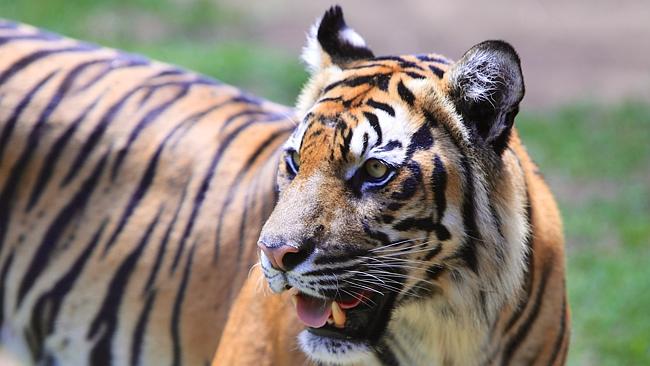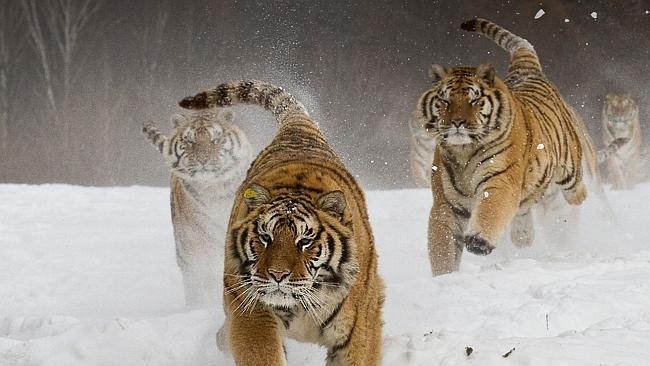Trouble and stripes: why tigers could soon become extinct
A BOWL of tiger penis soup costs 300. You won't believe how much a whole tiger penis sells for. Despite captive breeding in zoos, poaching and habitat loss mean these mighty beasts could be dying out.

TIGERS are on the way out. Their roar may soon be no more. You can dress it up all you like, but that's the likelihood in a world of ever-shrinking habitat and poachers who just can't be stopped.
Tigers are the world's largest cats. Each one has a unique stripe pattern, like a human fingerprint. We think of them as jungle beasts but they are actually incredibly versatile.
Tigers are found in northern Siberia, where average winter temperatures are around minus 40 degrees, but they also flourish in hot arid conditions and in the steamy jungles of Indonesia.
Or at least, they once did. Some species, like the Bali Tiger, are already extinct. All others are on the brink. There are now just 3,200 tigers left in the wild. It's distribution area has shrunk by a shocking 93 per cent.

That's why tigers are now being bred in captivity in zoos like Australia Zoo. Whether these programs work is questionable. New generations are born, but preparing a zoo-bred tiger for a life in the wild is another matter entirely.
News.com.au rang three Australian zoos which keep tigers for comment today on whether tiger breeding programs will ultimately help this creature survive. None would comment for fear of being seen to be bad-mouthing a rival zoo.
There are six species of tiger still alive in the world today: Bengal, Indochinese, Malayan, Amur (or Siberian), Sumatran and South China. Not a single South China tiger has been seen in the wild for 25 years now, so it too may be extinct.
The biggest threats to tigers are twofold. One is habitat loss. For example, Indonesian jungles cleared for palm oil plantations are blamed by many for huge drops in the numbers of Sumatran tigers.
The other threat is poaching. The skins and body parts of tigers are used in traditional Asian medicines - and these medicines are increasingly sought by wealthy Asians living both in Asia and in the West.
Tiger penis is especially prized. Many believe it has aphrodisiacal qualities. In other words, it's extremely expensive Viagra, despite there being a grand total of zero medical evidence for this.
Tiger penis doesn't come cheap. A bowl of tiger penis soup is said to command $300 or more. The full, uncut phallus reportedly sells for $5,000 on the black market.
That's not a lot of money for one of the rarest commodities in the world. But it's enough to stimulate poachers to action, so to speak.
So as habitats shrink and poachers poach, zoos do what they can. It's dangerous work for zookeepers. All tiger handlers get bitten, as we saw overnight.


Just down the highway at DreamWorld, tiger handler Patrick Martin-Vegue said he has been bitten "a few times over the years while playing with the cats - nothing serious, considering I work with such powerful animals. It's always good to remember accidents can happen."
Captive breeding programs in zoos are better than nothing. But as mentioned, they won't save the species in the wild. if you're really motivated to try to help tigers, your cash might be best spent on habitat protection.
The World Wildlife Fund is currently running an adopt a tiger program, and habitat protection is where much of the money goes. WWF aims to double the number of tigers in the wild by 2022, which is the next Chinese Year of the Tiger.
They didn't ask for the free plug, but we have to say adopting a tiger is far from the world's worst Christmas gift we've heard of.



